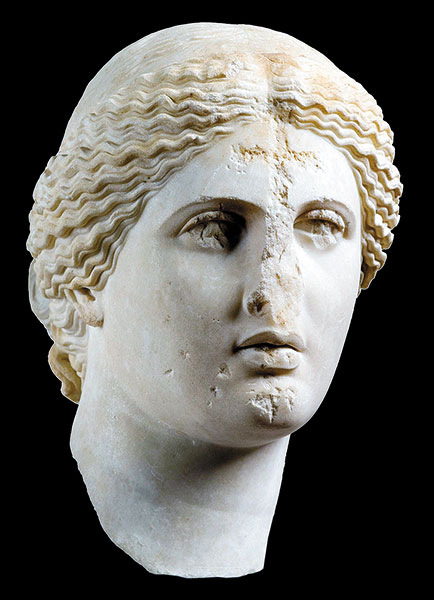
Chiseled on the forehead of this marble Aphrodite, a first-century A.D. copy of a fourth-century B.C. statue by Praxiteles, is a cross. The cross was likely carved by Christians, who had also damaged the goddess’s face to “close” the eyes and “silence” the mouth. More than just an act of vandalism, Christians may have reused such statues as stand-ins for saints or even the Virgin.1
This statue is part of Heaven and Earth: Art of Byzantium from Greek Collections, now on display at the Getty Villa. Showcasing artwork and objects exclusively from Greek collections, the exhibition highlights the development of Byzantine visual culture from its origins in the pagan late Roman Empire to its height in the Christian Byzantine Empire.
Featuring almost 200 objects, including sculptures, icons, mosaics, manuscripts and jewelry, Heaven and Earth seeks to familiarize museum visitors with Byzantine culture as well as to show the contribution of Greek artists to the Byzantine aesthetic.
The exhibition was organized by the Hellenic Ministry of Culture and Sports in collaboration with the Benaki Museum in Athens. Before coming to the Getty Villa, Heaven and Earth was on display at the National Gallery of Art in Washington, DC.
Through August 25, 2014
The Getty Villa
Pacific Palisades, CA
www.getty.edu
Already a library member? Log in here.
Institution user? Log in with your IP address.

